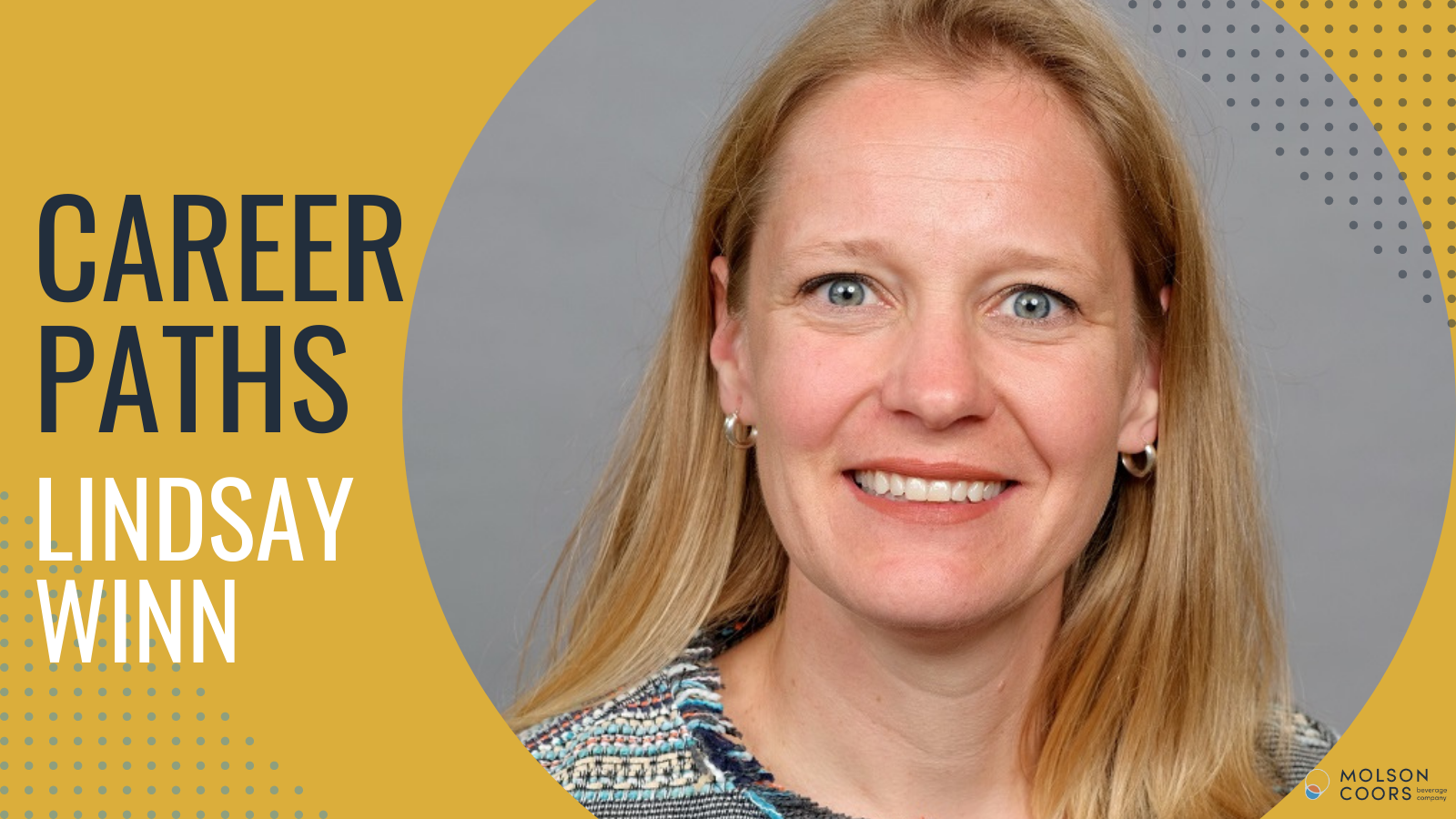What motivated Lindsay Winn to pursue careers across different parts of the Molson Coors business? The same reason she knows about how the small V shapes are created on the bottom of graham crackers – to learn more.
Lindsey joined Molson Coors as an intern when she returned to school to get her MBA. The following spring, she took on a full-time role as a commercial planning manager before transitioning into a senior manager role for the marketing planning and resource allocation team. With a passion to learn more about the business, she then made the horizontal moves to the Project Management Office and then IT. Today, because of her extensive career history, experience and skill set, Lindsay serves as the IT Business Partner vice president supporting our groups across North America. But it was long before joining Molson Coors that Lindsay started her cross-functional career journey.
We asked her about the cross-functional moves and how they impacted her career.
Why are cross-functional/horizontal moves equally as important and impactful as vertical moves?
As you take on more complex projects or assignments, you’re bound to need to work cross-functionally. If you’ve never worked in those other functions, it’s harder to know who to call or predict where you might have obstacles in your way. You may also not know how to speak someone’s “language” as you try to influence or sell in an enterprise idea that needs lots of broad support.
While it may look like I “shot up” the ladder at Molson Coors, I spent 10 years working cross functionally before business school and before joining Molson Coors Beverage Company. There were small promotions in those years, but it was really a lot of time learning in lateral, cross-industry roles. I sold, I supported customers, I created proposals, I segmented and worked with customers, I negotiated contracts, I visited manufacturing facilities. And today, I still use ALL of those experiences in my current role.
How has working across functions helped you build your skill set?
Well, one surprising learning is that the problems and challenges in different functions aren’t as different as you’d imagine. As nutty as my career path seems on paper, all the steps have built on the other steps and the skills have been the same and developed over time. Process issues, communication issues, the need for structured problem solving, etc. exist across all functions. So, I have learned to have confidence in pushing for clarity, being sure people are really communicating with each other and trying to map out solutions – no matter which function I’m reporting to at the time.
How did your passions and interests inspire you to move across functions?
I do think it’s generally a passion for learning. I don’t think there’s a boring job or industry if you’re always open and looking for those interesting things. For example, did you know the little V-shaped marks on the bottom of a graham cracker are from a CB5 oven band? I love learning little things like that. I ate a lot of graham crackers never even looking at those marks. So, particularly early in my career, I was always trying to expand what I knew and learn more.
How did your manager support you as you pursued a role in a different function?
I’ve always been lucky to have leaders who believed in my abilities and would give me a chance. I think leaders can support these moves by focusing on the skills, not the projects.

